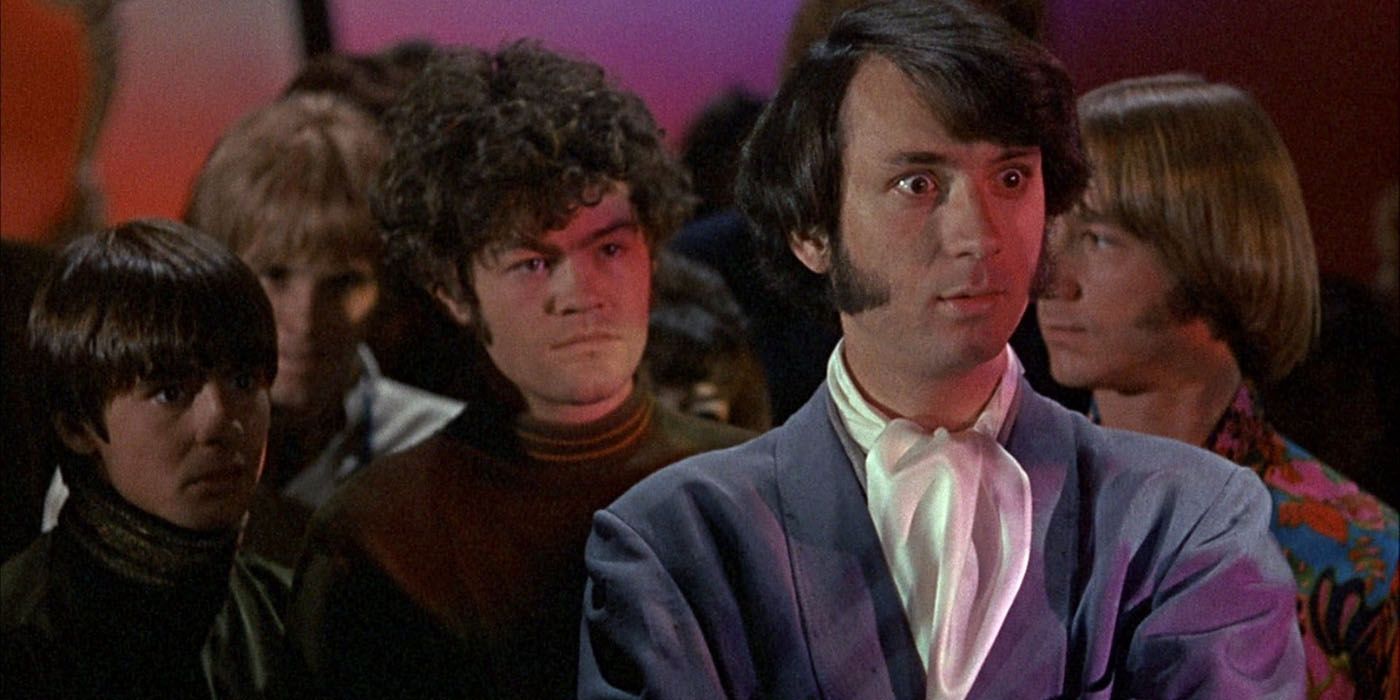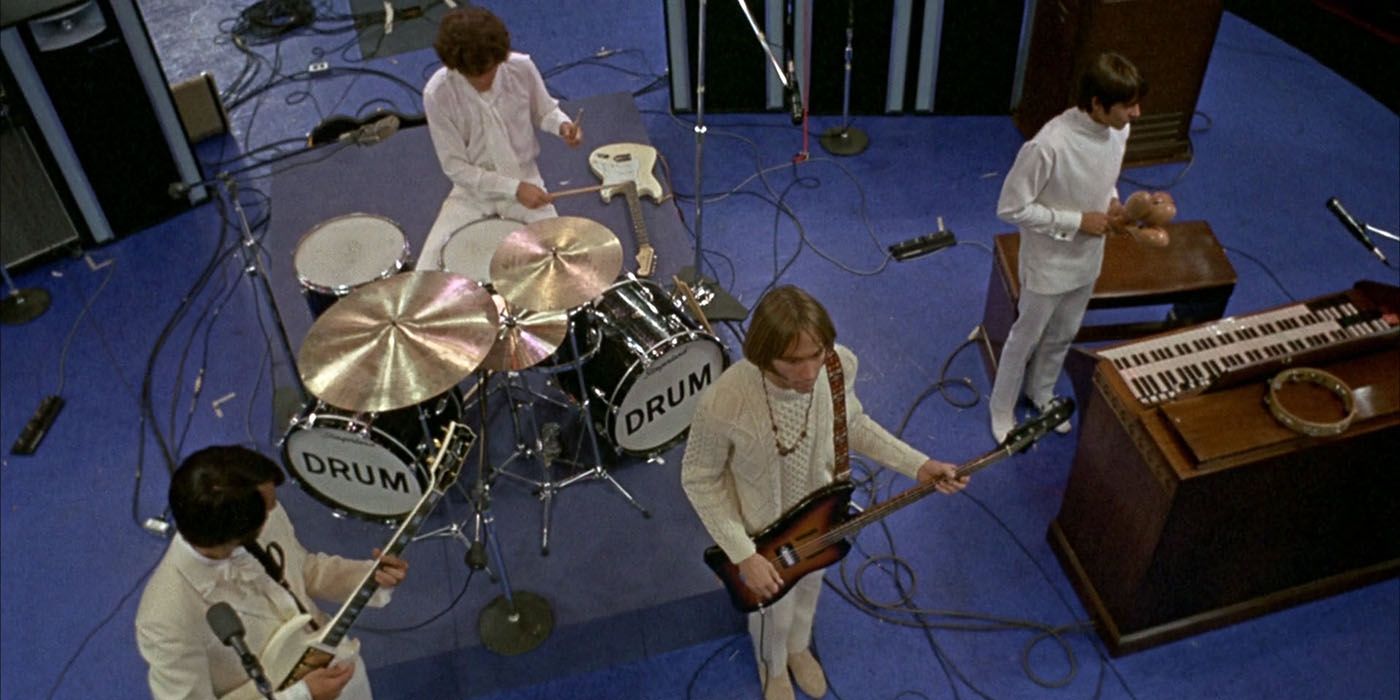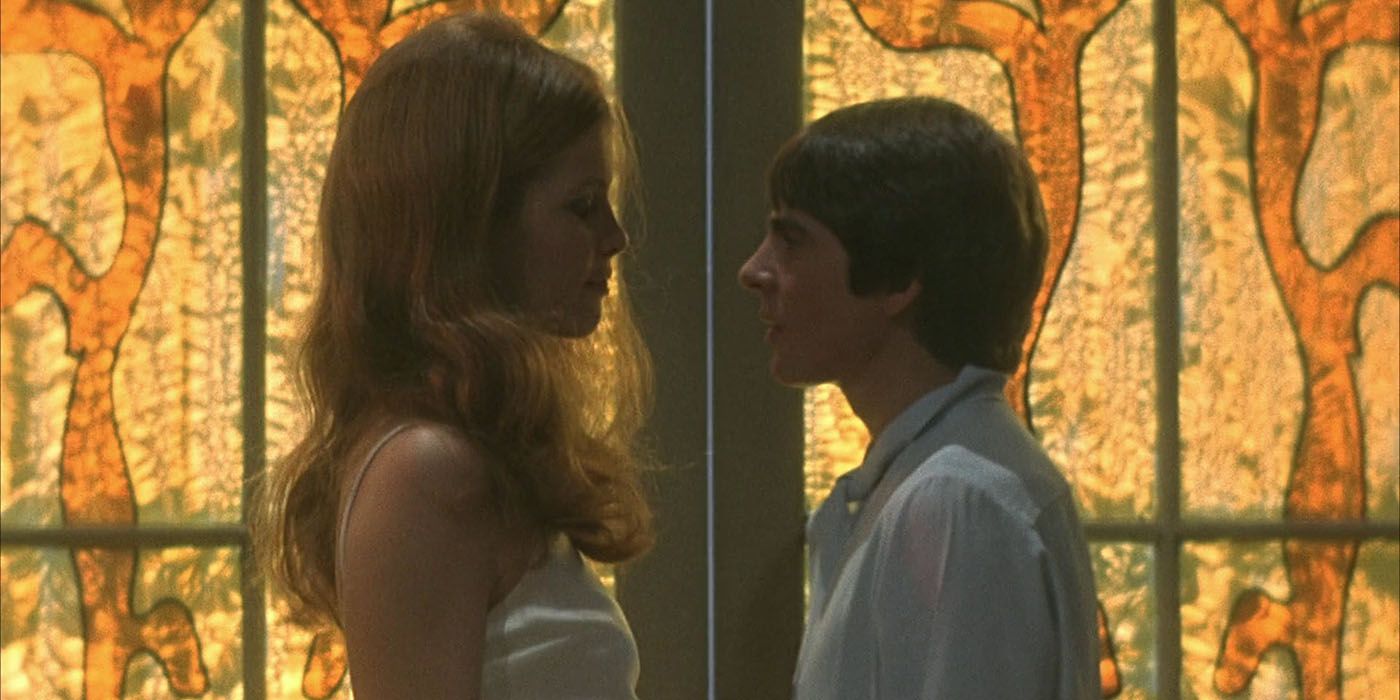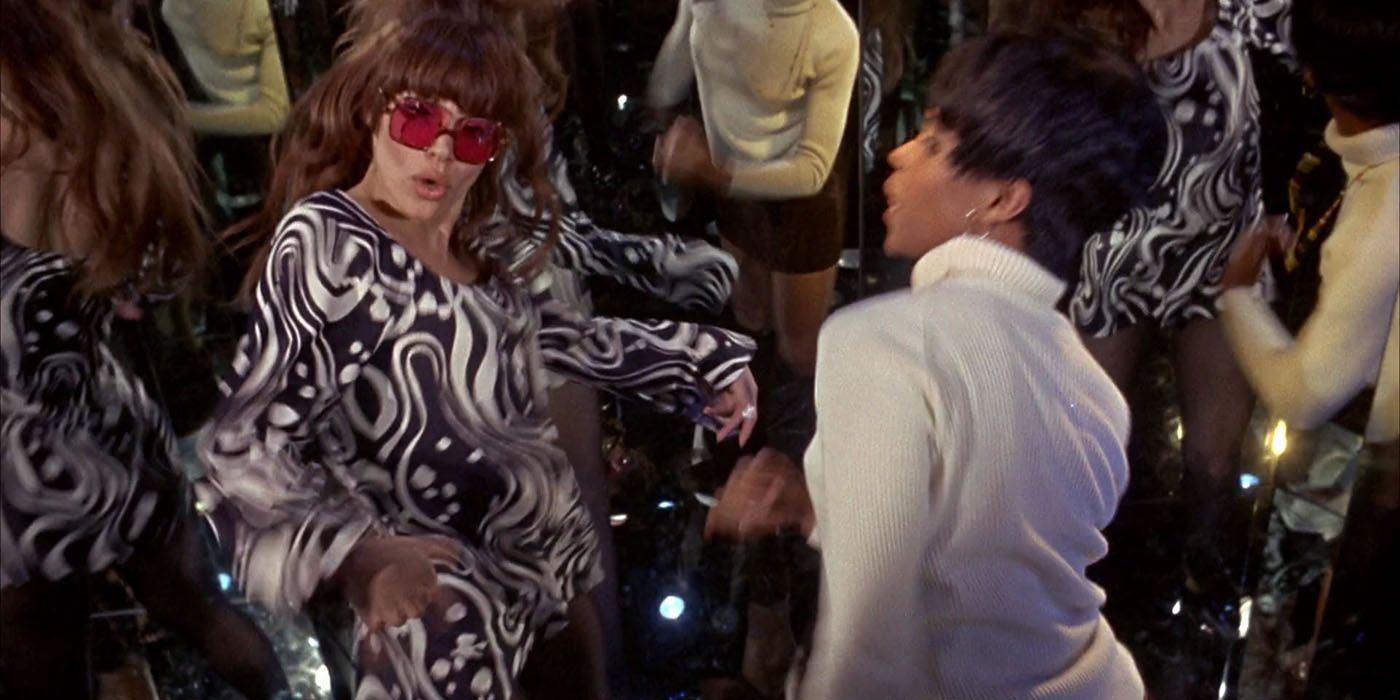When The Monkees premiered on NBC in the Fall of 1966, there was nothing like it on TV. Before Laugh-In, the series was delivering a unique stream of Marx Brothers style gags, non-sequiturs, and sunny pop tunes. Created by Bob Rafelson and Bert Schneider originally as a series about a folk group, the show had no takers. After the success of The Beatles and A Hard Day's Night, the concept was changed to long-haired rockers and quickly found interest. With a pilot script by Paul Mazursky and Larry Tucker (Bob & Carol & Ted & Alice), and starring four young actors/musicians — Micky Dolenz, Mike Nesmith, Peter Tork, and Davy Jones — the series would be an immediate success with a pre-teen audience who missed Beatlemania but were ready for Monkeemania.
More amazing is that the imaginary group produced hit songs. With a stable of great songwriters and the assistance of musical advisor Don Kirshner (a/k/a “the man with the golden ear”), the Monkee music machine seemed unstoppable. That is until Nesmith, Tork, Dolenz, and Jones decided that having no say in the creative process was kind of a drag. They wanted not only more control over the music being produced, but also for the show to reflect some of their ideas and attitudes. The second season of the series and the records produced would see each member blurring the lines of the characters they played and the music they made with their real personalities. For their part Rafelson and Schneider encouraged the guys to be creatively involved in the show including having them bring guests on like Frank Zappa and singer/songwriter Tim Buckley.
While the series became more inventive and irreverent, the end of the second season found the ratings cooling down and the hit songs drying up. The young Monkee fans who were giddy for “I’m a Believer” were now starting to listen to Jefferson Airplane, The Grateful Dead, and maybe Moby Grape. But the Monkees, along with Schneider, Rafelson, and a young actor named Jack Nicholson, decided to head out to Ojai, California with some Primo weed, a few far-out ideas, and a tape recorder. It was the tapes from this drug-fueled weekend that would produce the script for Head, a freak flag-waving f-you to the Hollywood mainstream.
Rolling into theaters in November 1968, Head was far from a happy hippy flower-power flick. Both angry and funny, this is a hallucinogenic cinematic rant on fame, big media companies, old Hollywood, new Hollywood and the battle for artistic freedom.
That burst of freedom comes at the beginning of the movie as the band interrupts a ribbon-cutting ceremony by jumping off a bridge. Is it a group suicide or a cosmic rebirth? More likely it was some of that really good weed in Ojai. Head moves from this underwater psychedelic sequence to parodies of a variety of Hollywood genres. War films, Westerns, and even boxing flicks get Monkee-ized. It’s as if director Rafelson, screenwriter Nicholson, and the Monkees wanted to make sure they got to play in every area of Columbia Pictures Studios before being kicked off the lot.
In Head, the Monkees are also hell-bent on shattering their image as lovable, loopy innocents: a sequence with a female kissing each Monkee is an obvious nod to the joys of groupies; the song “Circle Sky” is an intense commentary on the Vietnam War; and a scene with the wild character actor Timothy Carey has the Monkees laughing at a person with a disability. (Bet you didn't see that coming.) But it might be a dream sequence, with Andy Warhol mylar balloons floating about, that contains the most shocking moment: Nesmith proudly telling an aghast crowd that he doesn’t like...Christmas!
Some reviews have called Head pretentious. It’s far from it. Everything is played as a joke, a thumb on the nose, and a tongue in cheek. Even dark moments lead us to surreal shtick or a manic breaking of the fourth wall. The film does ask you to take a giant step outside your mind and play a wild game of free association. It's all fun and games until the mind-blowing journey is abruptly ended by Big Victor (played by Hollywood legend Victor Mature), who puts the Monkees in a box and drives them off to a place where they can get their minds right, start behaving, and go back to generating revenue.
It’s not surprising that 12-year-olds had little interest in the movie. It is surprising that movie critics were also dismissive. Head quickly disappeared and forced the group to return to TV for a special, 33+1⁄3 Revolutions per Monkee, which was forgotten quicker than Head, and led to Tork exiting the group to become a teacher. With no TV series, or future movie projects, the remaining Monkees carried on recording unsuccessful albums and appearing on shows like Hollywood Squares and The Johnny Cash Show. Meanwhile, Rafelson and Nicholson would move on to their next projects, the successful counterculture films Easy Rider and Five Easy Pieces.
In 1970, Nesmith left to record his brand of quirky country rock and became a music video pioneer, while Dolenz and Jones would tour (sometimes) together and work on other TV and stage projects. But in 1986, MTV began airing The Monkees marathon to celebrate the 20th anniversary of the series. Soon the band was out touring (without Nesmith) and even recording new music. Monkeemania was back, and it seemed a perfect time for a Head revival. But the Monkees didn’t talk much about Head and rarely performed music from it. In 1996 the band would reunite with Nesmith and record a new album. It was on this tour that songs from the movie started popping up in concert. The group seemed to embrace the movie as part of their legacy, although Jones would continue to say he thought making it was a mistake.
The release of the film on Blu-ray in 2010 as part of the Criterion Collection’s America Lost and Found: The BBS Story, which celebrates the entire output of Rafelson, Schneider, and partner Steve Blauner, is the starting point of the real rebirth of Head. Its cult has only grown in the last decade among film historians and filmmakers. Dolenz (the only living Monkee) has recently talked about the fact that Quentin Tarantino and Edgar Wright have told him they count it as one of their favorite movies. With fans like that, it’s guaranteed that Head will never again be forgotten. That’s good news, because this boundary-pushing, genre-defying, spaced-out ode to artistic freedom remains one fantastic trip.




